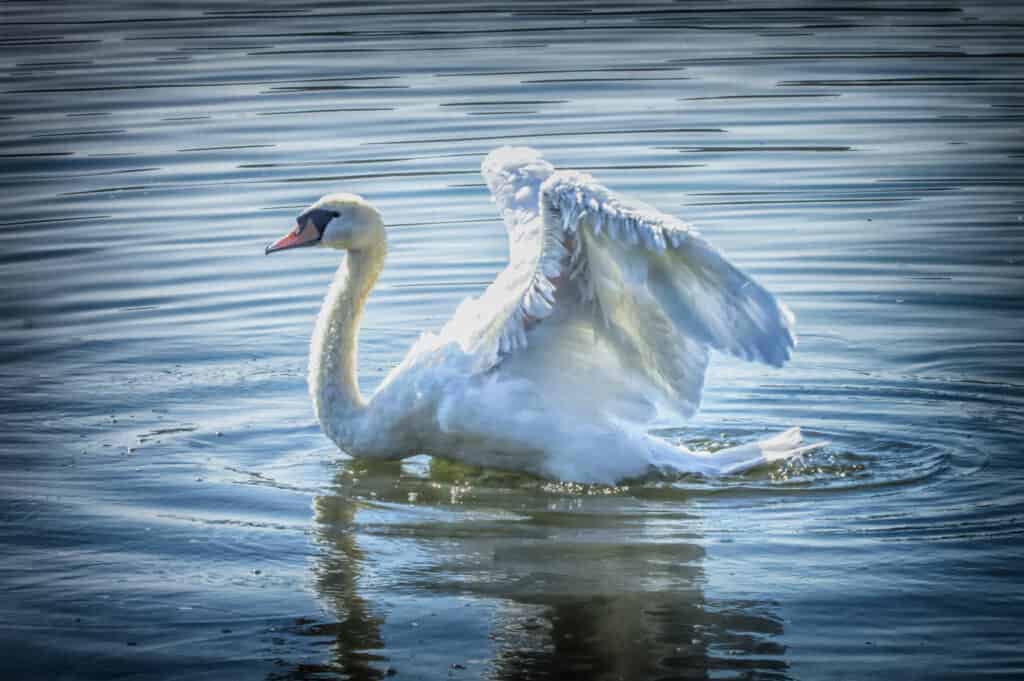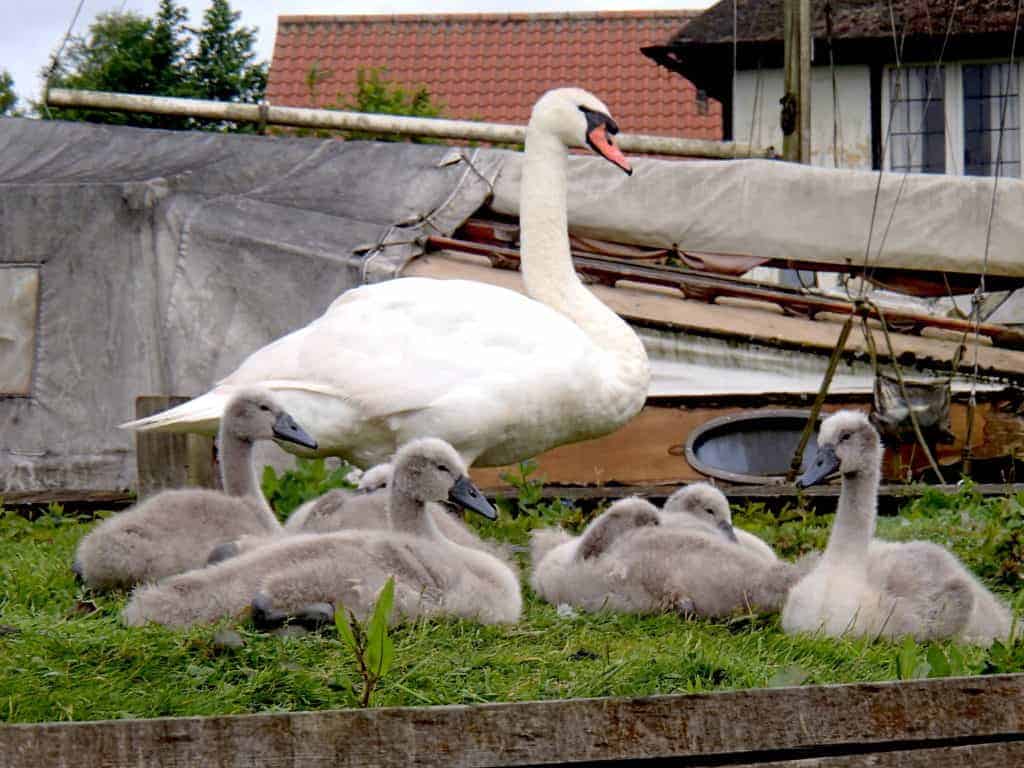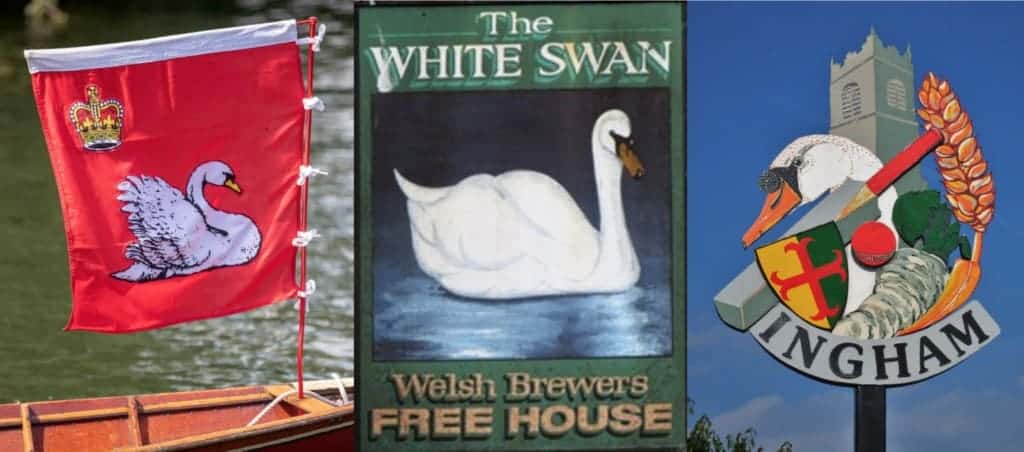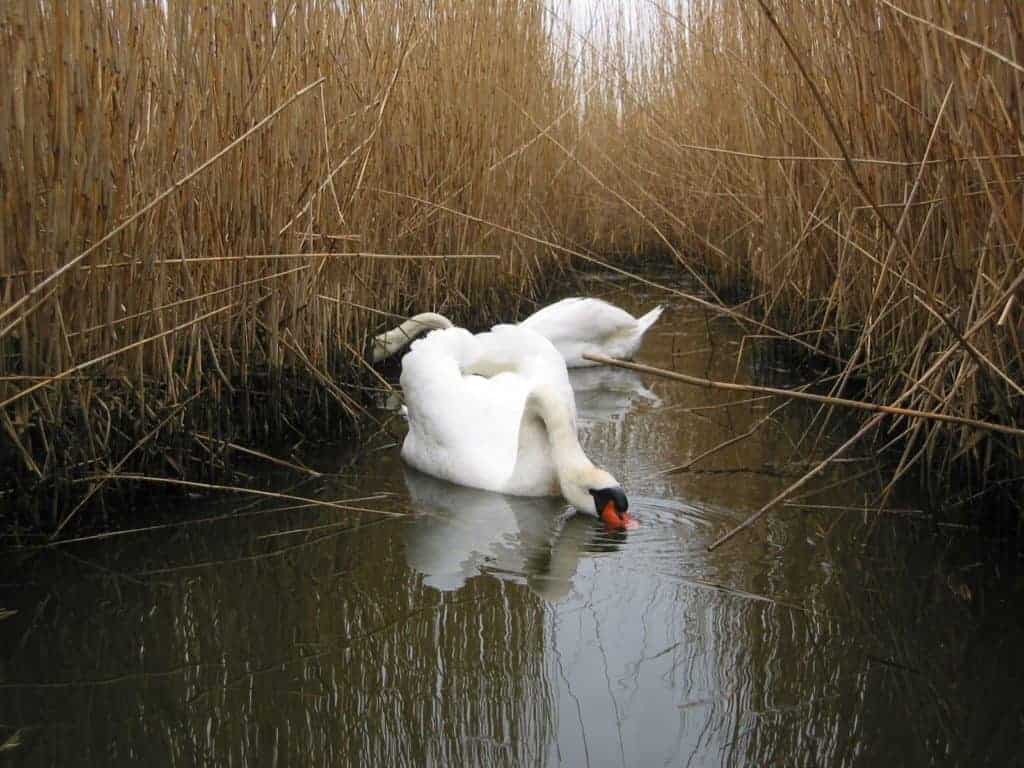Mute Swan

The wild populations are found over Europe and Asia, but there are established feral populations in North America, Northern Japan, Morocco, South Africa, Southwest and East Australia and New Zealand. They are not always as fondly regarded in these parts due to their impact on the respective ecosystems.

This is the most established swan species in aviculture. The ‘Polish’ Mute Swan is a colour variant, which results in pale cygnets with pale greyish-pink legs and feet instead of the usual black.
Cygnus olor
One of the most beautiful and majestic of the swan species, the Mute Swan is widespread over the British Isles. Where humans use the waterways, they regularly approach people anticipating treats. They are very much a part of British culture.
In 2015, the Mute Swan was moved from the British Green list to its Amber list as the UK now holds 20–30% of the wintering European population, making it of international importance.

The old tale that ‘a swan can break your arm’ is more myth than fact. True, they might be aggressive in the breeding season and try to see you off. Chances are, that they will only cause damage if you are young and small or suffer from bone disease.
It’s not strictly true that ‘the King owns all the swans’ in Britain. Technically, the Crown does own all unmarked Mute Swans in open water, but His Majesty only exercises ownership rights on some stretches of the Thames and its tributaries.

Mute Swans usually take 3 years to mature. They breed in March to mid-May. The male (cob) starts the nest building, enticing the female (pen) to pick the right spot. They both build up the mounds with whatever materials are available. If they are successful parents, they will use the same nest for many years, adding more and more to the nest. In captivity a pair will not tolerate other swans on their pond, so mature pairs should be kept separate during the breeding season. They make excellent parents, defending their young against any predator.
Mute Swans mate for life, though in the wild if a pair are unsuccessful breeding, they may change partners. The pen will lay 3–8 eggs and incubate for 31+ days. The cob will become very territorial, and defend the nest and surrounding area. During the breeding season the colour of the male’s bill intensifies.
FURTHER READING
Harteman, J. Harteman Wildfowl Aviaries Mute Swan.
Taylor, M. (2021). Birdguides.com What is a ‘Polish’ Swan
Share this page